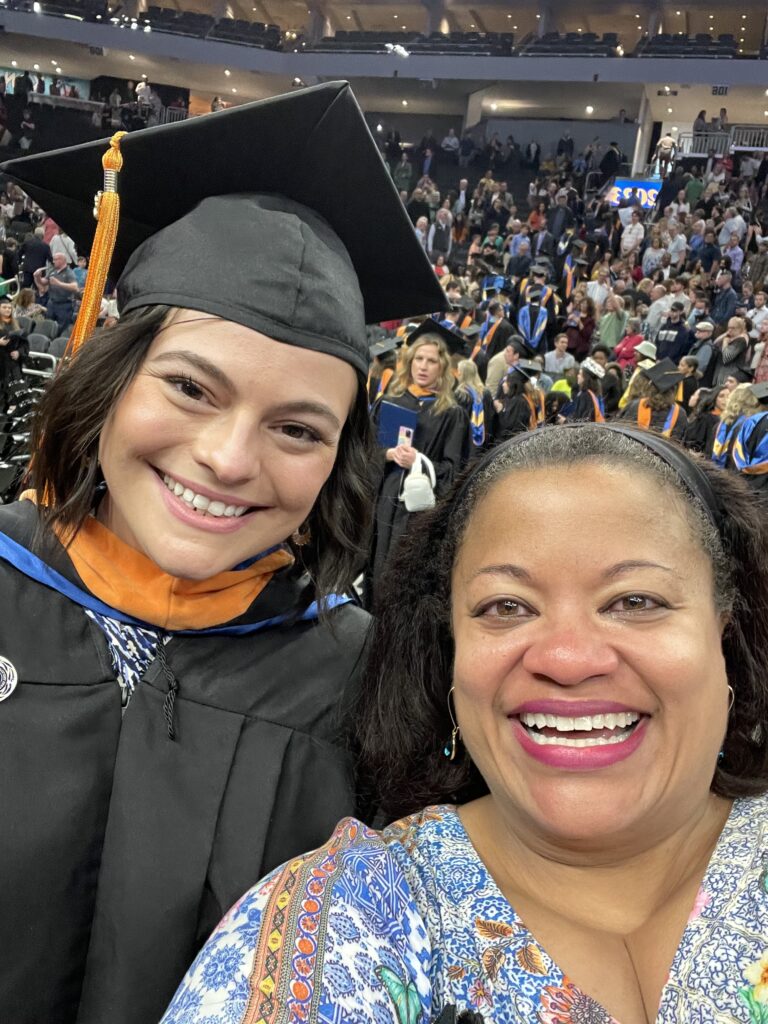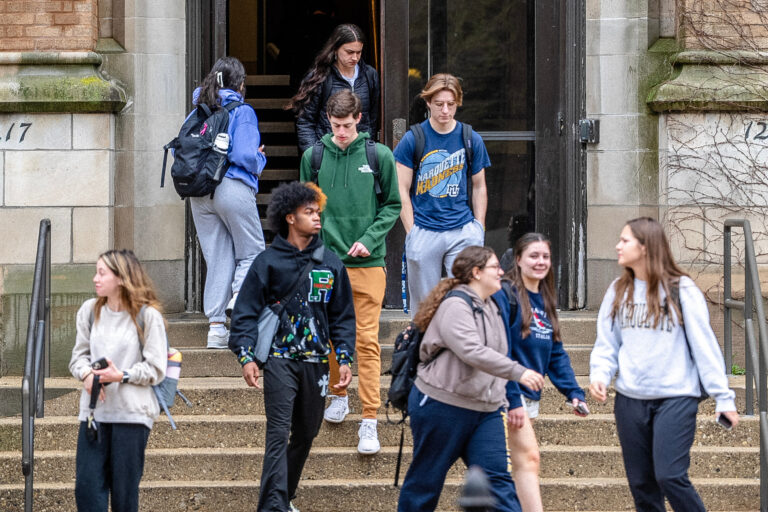Dr. Kelli Jones, clinical assistant professor in the College of Nursing, sat in a meeting for clinical instructors in the 707 Building in the summer of 2021, but her mind was hundreds of miles away.
Jones had just gotten back from California, where she spent the summer caring for her sister, Cecilie Nelson, who had been living with chronic kidney disease for nearly two decades.
Doctors had recently put her on peritoneal dialysis and told her family that a kidney transplant was necessary. The long wait for a donor began.
Little did Jones know, the answer to her sister’s prayers was sitting right across the table: it was Callie Gilmore.
“We all went around and introduced ourselves and said what we did over the summer,” Jones says. “When they got to me, I mentioned that I spent the summer with my sister and she was really sick. At break time, Callie came up to me and told me that she always wanted to donate a kidney and that she would do that for my sister. I had never seen or talked to Callie before in my life.”
For Gilmore, a clinical nursing instructor at Marquette, the desire to donate came from seeing a post on Facebook about someone who needed a kidney. She got curious and started learning more about the benefits of living donation. What she learned stunned her. More than 100,000 people in America need a kidney, according to the National Kidney Foundation, but only 17,000 people per year receive one. Twelve people on the donation list die every day waiting for a kidney that never came.
The numbers bothered Gilmore, as did the reality that she had two perfectly good kidneys and only needed one of them.
“I’m a numbers person, so when I see the risks of people who donated a kidney weighed against the benefits, it seemed like a no-brainer,” Gilmore says.
While Gilmore grew more receptive to the idea of a living kidney donation, Nelson began to need it even more urgently. Doctors were particularly concerned about her glomerular filtration rate, a measurement of how much blood passes through the kidneys each minute. Normal readings for this metric are between 60 and 120. Over the summer of 2021, Nelson’s sank from 16, which indicated severely decreased kidney functionality, to 7, which represented kidney failure.
“At that point, you have to start talking about it to friends, expressing that it’s more serious than what they might think and that you need the biggest favor of your life,” Nelson says.
Nelson could hardly believe the news when her sister called and said that the favor was coming from a stranger, someone who wasn’t even asked.
“I guess I was just awestruck,” Nelson says. “You’re like, ‘Who does that?’ It’s unbelievable.”
Applying for a donation is easy. Froedtert, UW Health and Aurora St. Luke’s all perform kidney transplants and solicit living donations. The road from application to surgery, however, is long to ensure the safety of both the donor and the recipient. Donors go through a battery of tests, including bloodwork and CT scans, to determine whether they are healthy enough to donate. A psychological evaluation is also administered to ensure the patient has sufficient agency to make the decision of their own free will.
While in the testing process, Gilmore discovered that her kidney would not be a direct match for Nelson. Instead, she went through the National Kidney Registration Voucher Program, which paired Gilmore with a match that urgently needed a kidney and moved Nelson up on the list to receive one herself. In that sense, Nelson has two donors: the person who gave her a kidney and Gilmore, whose donation sped up the process of getting one in the first place.
“I emailed Callie the night of the surgery; she was my first contact when doctors told my sister’s husband that the new kidney was functioning as it was supposed to,” Jones says.
Gilmore has not met the person who received her kidney; she only knows that it was someone in Texas. Nelson, likewise, does not know the person whose kidney is now in her body, although she says she’d like to. However, Gilmore and Nelson met in person several months after the surgery, along with their respect families.
“You don’t say much, you just hug,” Nelson says. “I wanted to meet the person who would do that for a stranger. And she just explained it to me so matter-of-factly.”
“It was so amazing to finally get to meet her in person,” Gilmore says. “It was such a surreal moment because we had never met but we had kept in touch over the phone. It truly felt like she was there with me every step of the way. She is such a positive, bubbly person, and I could tell she is living her life to the fullest.”
After a life-altering decision for Gilmore and a life-giving procedure for Nelson, everyone has returned to their normal lives nearly a year later: Nelson as a realtor in California, Jones teaching at Marquette and Gilmore working as a certified nurse midwife. Gilmore no longer teaches, but says she will again someday, to impart her perspective on what’s important in life to students.
“I have a greater appreciation for what my body is capable of,” Gilmore says. “In the world right now, there is so much focus on what you look like and whether your body fits a particular mold, and this was a nice way to recognize that my body is made for much more than meeting societal standards. I had two organs; now I have one that is doing perfectly well for meeting my needs and my other one is doing well for someone else.”



